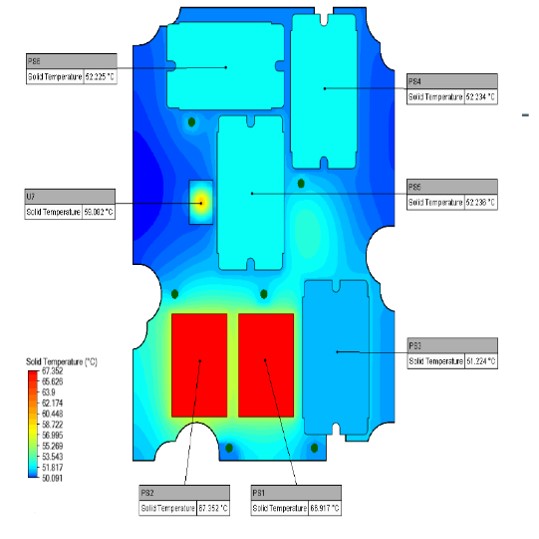PCB ANALYSIS
SIGNAL INTEGRITY
Signal integrity (SI) analysis is an essential part of modern electronic design. Increasingly fast edge rates in today’s integrated circuits (ICs) causes detrimental high-speed effects, even in PCB running at low operating frequencies. As driver ICs switch faster, a growing volume of boards suffers from signal degradation, due for instance to over/undershooting, ringing, glitching, crosstalk, and timing problems. For certain levels of signal degradation, the logic on a board can fail. Our main goal is to get the design right at the first time, avoiding costly overdesign, as well as time consuming reiterations of layout design, prototype production and test cycles in the lab.
DDR4-2400 - USB 3.0 - SATA - PCIe - HDMI - LVDS

Eye Diagram

Voltage Drop
POWER INTEGRITY
The ever-increasing voltage supply required by ICs, in addition to a dramatic increase in power consumption, makes proper power distribution in the whole board an exceedingly difficult task. Inadequate power delivery, may lead to a distortion of the signal, that in some cases can result detrimental for the logic of the board. The ability to make and analyse designs where those aspects are taken into account will ultimately help the customer to reduce production cycles and enter the market faster, with a more reliable product.
VOLTAGE DROP - CURRENT DENSITY - DECOUPLING CAPACITOR
THERMAL ANALYSIS
Thermal design is a critical aspect of PCB design, taking place throughout the whole PCB design flow, from part selection through placement and routing to design verification. In LED lighting applications, a proper heat dissipation is crucial for good thermal performances of the luminaire. PCB are engineered in different ways, in order to improve the thermal management and thus the card performance: for example, a large amount of metal in or on the PCB is the key for effective heat dissipation. Meeting thermal requirements results in fewer design iterations and minimizes the number of physical prototypes required.

Solid Temperature
